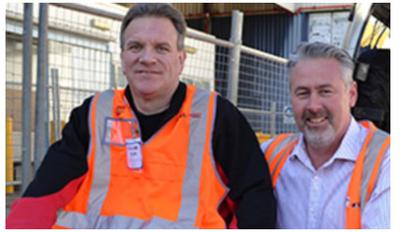Workplace falls seriously injure 21 Australians every day
by LINQ Height Safety
(www.insideconstruction.com.au)
Every single day, some 21 Australians suffer serious injuries from a fall at work and require a week or more off - with six weeks off being the average - according to research analysed by LINQ Height Safety Equipment.
Resultantly, falls are a common cause of death and serious injury in Australian workplaces, particularly in construction where they are the most common cause of death and account for half of the total hospitalisations.
An ex-carpenter and height safety advocate, David Crawford, who became a quadriplegic after a roof he was working on gave way in 1991, implores tradies not to leave their harnesses sitting in the back of their ute.
"Your harness is not going to help you unless you're actually wearing it," Crawford, who works with Spinal Cord Injuries Australia's (SCIA) Teamsafe program, said.
"I constantly see guys standing on roofs without harnesses. I see plumbers erecting cleaning gutters. I see tradesmen hanging over the edges. They have no fall protection, no harnesses, nothing,"
He also pleads with workers to speak up about their safety concerns and for management to listen, citing this as critical to improving all aspects of safety on site.
And while wearing a harness will definitely improve your chances of survival, it must be appropriately designed and fitted, according to chief technical officer of LINQ, Stephen Sugden.
Sugden said that many workers who are wearing a harness are rescued unconscious after a fall which is attributed to a violent collision between the fall arrest connection hardware and a worker's head during the moment of impact.
"Many harnesses have a floating rear dee setup, a piece of plastic holding the dee in place, so that in the moment of impact there is a significant risk that the dee will break through the plastic holder, resulting in the dee and associated hardware smashing the back of the worker's head," Sugden said.
He cited LINQ's research which led to the design of harnesses with what he calls "a closed loop system", which he said means the dorsal dee will not move during the moment of impact.
Sugden also stressed the importance of the harness fitting correctly and having a central front attachment point - as required in Australian Standard AS/NZS 1891.1 - so as to limit vectorial (sideways) forces during the moment of impact (MOI).
"You can bruise a rib, crack a rib or even puncture a lung," he exclaimed.
Suspension Trauma
Even if you survive a fall uninjured, the danger doesn't end there. The tourniquet effect of ongoing suspension (hanging) in a harness, combined with the effect of gravity on the body, limits blood flow to vital organs and can lead to "orthostatic intolerance" or "suspension trauma".
"Symptoms include increased heartrate, sweating, tingling in the arms, dizziness, pins and needles, nausea, heart palpations and confusion, followed by fainting and in some cases death."
Sugden said the use of LINQ's Suspension Trauma Strap will enable the removal of all pressure on the femoral artery and has been proven to alleviate the dangers of suspension trauma.
For more information, watch LINQ's video Guide to Fall Arrest Systems, or download their Height Safety White Paper.
- See more at: http://www.insideconstruction.com.au/site/news/1051068/workplace-falls-seriously-injure-21-australians-day#sthash.4p9GRDss.dpuf
Join in and write your own page! It's easy to do. How? Simply click here to return to News portal.



